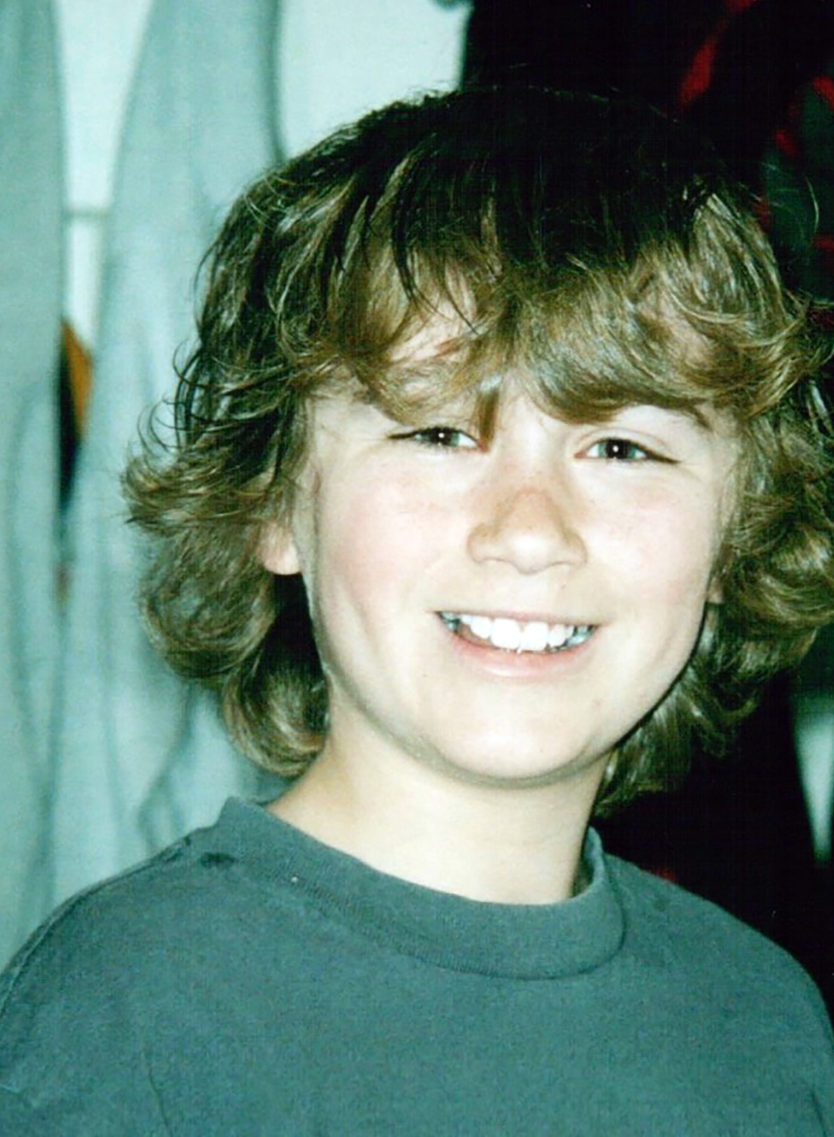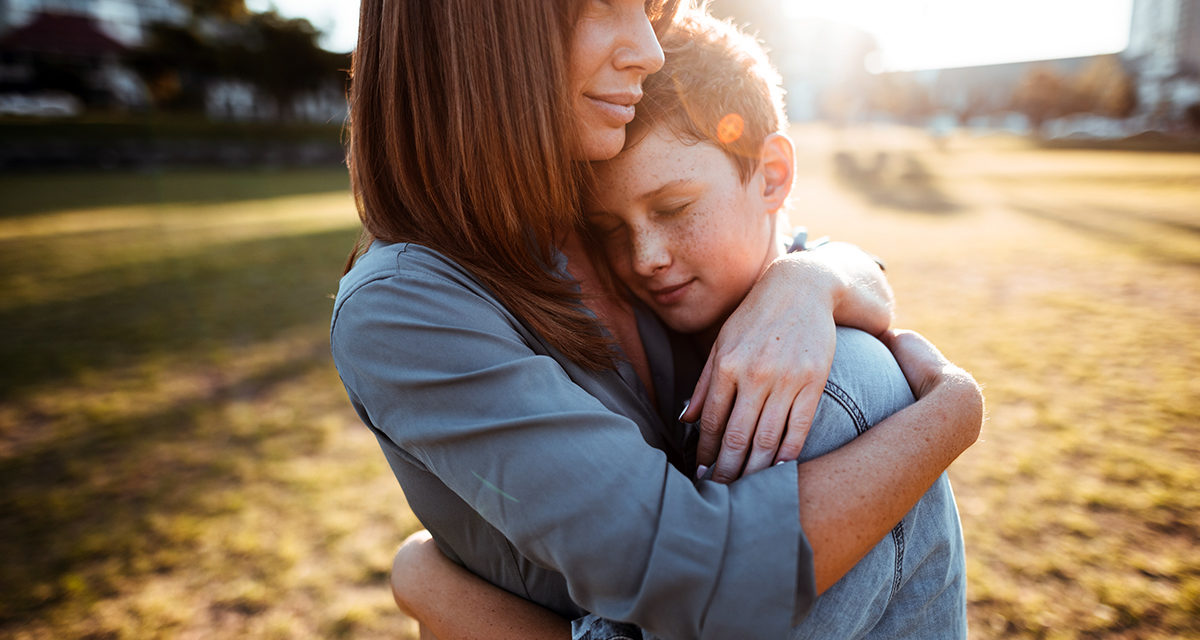No matter how much we love our adolescent children, knowing how best to support them during their teen years is confounding for many parents. With suicide rates climbing, the stakes are higher than ever. Here’s help for parents when they need it most.
The teen years could be rough, Wendy Sefcik knew.
The Morris County mom of three was no stranger to her sons’ mood swings, irritable outbursts, and self-imposed isolation, but puberty seemed like a small bump in an otherwise idyllic life. “We had three boys, two dogs, a great marriage,” she says. “Life was really fun. We couldn’t have loved our kids more.”
So, when her middle son, TJ, came home one night just before his 14th birthday and it was clear he had been drinking, Sefcik and her husband were concerned, but accepted a counselor’s suggestion that it was typical teenage experimentation. But there were other signs that worried his parents. TJ had always excelled at sports, but his performance on the lacrosse team that spring was so lackluster that even his coaches noticed. At home, he started having angry outbursts and picking fights with his brother and parents, which Sefcik says was unusual for her previously sweet, sensitive son. But his grades were solid, and counselors reassured the Sefciks that this was all normal teen behavior.
One day, TJ got so angry he punched in the door of his closet. Wendy knew this was no longer simple adolescent rebellion, but she wasn’t sure what to make of it. He also regularly complained of aches and pains, for which no doctor could ever find a cause. Sefcik’s gut told her something was deeply wrong, but the idea that her son might be a suicide risk never crossed her mind, and none of the counselors she took him to ever mentioned it, or that TJ was suffering from depression. But, at 16, TJ took his own life.
In the decade since he died by suicide, stories like his—and like his mother’s—are becoming increasingly common. The number of suicides among people ages 10 to 24 surged by 56 percent nationally between 2007 and 2017, according to the National Center for Health Statistics. Across the United States, the rate of deaths by suicide for people under 18 continues to rise, and in New Jersey, the number of suicide attempts in that age group is above the national average.
Beginning in 2017, during a 20-month span, seven students in Mercer County took their lives, leading the superintendents of those school districts to call for action. “We’re moving in the wrong direction,” says Maureen A. Brogan, LPC, ACS, DRCC, statewide coordinator for the Traumatic Loss Coalitions for Youth (TLC), a program that deals with the aftermath of events including suicide. “And even one death is too many.”
In our desire to protect our kids, we’re not allowing them to feel all their feelings, including the unpleasant ones. Life can be joyous and hard for everyone at times. We have to get better at letting our children navigate that on their own.

At 16, Wendy Sefcik’s son, TJ, took his own life.
If you think someone is suicidal, don’t dance around it. As a parent, it’s hard to even entertain the thought that yes, your child is thinking of ending his or her life, but be prepared for that answer. Don’t dismiss it. Ask them to tell you more.

A Deadly Trend
While statistics show that certain subsets of youth are at increased risk of death by suicide—specifically African Americans and LGBTQ kids—experts stress that suicide is a public health issue that can affect anyone. “If it happened to my family, it can happen to any family,” says Sefcik, 57, now a mental health advocate and chair of the New Jersey Youth Suicide Prevention Advisory Council.
But unlike stereotypes and myths that are often repeated to the detriment of young people, these aren’t just loners or social outcasts who are dying by suicide—they are honor students, elite athletes, kids with active social lives, and those with loving families. In other words, the very kids we expect to have the brightest futures are often the ones taking their own lives.
“Very often, when the suicide of a young person happens, we want a reason,” says Sefcik. “We’re quick to look for someone or something to blame, from mental illness to social media.” But while those factors may play a contributing role in a teen’s decision to end their life, research shows that there is rarely a single or simple explanation. Ultimately, no one has a guaranteed way to identify the kids at risk—which means, if you’re a parent, that your kid is potentially one of them. That’s a terrifying thought.”
While we often want a simple explanation, there are likely several factors working together when someone makes the decision to end their life, says Brogan. She has identified three that collectively form what she calls “a lethal triad.”
The first concern is an underlying vulnerability, be it depression, anxiety, or a history of substance abuse or family problems. Also typical is a precipitating event, often a major transition like a breakup or approaching graduation. Third is “access to means,” or a concrete way to carry out a suicide plan. Restricting access to means only goes so far—in New Jersey, where there are strict gun laws, for instance, shootings are less common. But grimly, Brogan says, “Hangings have been on the increase.”

Just a Phase—or More?
Teens can be particularly vulnerable for a few reasons. Biologically, their brains, including the part that governs impulse control, are still developing. Hormonal and other changes they’re going through can sometimes mask other, more serious symptoms of depression or anxiety, which are both on the rise in this age group, again for unknown reasons. It’s tough for parents or other adults to know how to tell the difference between typical adolescent behaviors and red-flag ones, says Brogan. And often, the warning signs they’ve been told to look for don’t manifest the way they anticipate either. “A lot of times with teens we think we’re going to see depression as sadness, but instead they’ll express it through anger and irritability,” Sefcik says.
Teendom is also full of transitions—changing schools, social circles, identities—and transitions, Brogan says, “bring up more doubts about the future, and more insecurities.” Teens are often experimenting with drugs or alcohol, which can impact decision-making, and the very nature of being a teen means a daily struggle to separate yourself from the support system you’ve had your whole life, namely mom and dad. Losing your main confidants, even by choice, can make an already rough time even rougher.
The combination of poor impulse control and isolation, plus the romanticizing of suicide in the media can be “a very potent brew,” says Diane P. Calello, MD, executive and medical director of the New Jersey Poison Information and Education System in the Department of Emergency Medicine at Rutgers – New Jersey Medical School in Newark. She points to shows like 13 Reasons Why or the publicizing of celebrity deaths like Anthony Bourdain’s as problematic. Calello has seen overdose cases in kids as young as 8, and while that is rare, suicide attempts are increasing among preteens.
“The world has become a much more complicated place for kids,” says Sonia Rodrigues-Marto, MA, LPC, ACS, director of Child & Adolescent Services for School and Community Based Programs at Rutgers Health – University Behavioral Health Care. There is more pressure to get into good schools and participate in extracurriculars and sports. Many teens have jam-packed schedules while lacking basics like adequate sleep and good nutrition.
The pressures today’s teens face don’t all come from their parents. “Social media is the world our teenagers live in now,” Rodrigues-Marto says. “Everything revolves around who is posting what, who likes who, how many people they have on their friends list.” Keeping up with the virtual competition can be an unrelenting stress in kids’ lives, but restricting devices or online access can also mean taking away a valued support system of peers. And sometimes, texting a friend is the only sign a kid will give that they’re struggling.
Erasing the Stigma
In the world of suicide prevention, one of the biggest challenges has been dispelling the stigma that surrounds these deaths. Too many people believe that if you talk about it, you plant the seed of a destructive idea in the minds of others, says Brogan. “What we’ve actually found,” she says, “is that talking about suicide can get people who were already thinking about it to open up.” She calls this “post-vention” and the TLC has found it can be critical to getting kids with suicidal ideations the interventions they need, as well as promoting healing for others affected by the loss.
“My son knew he needed help, he wanted help,” says Tricia Baker, a West Windsor–area mom who founded Attitudes in Reverse (AIR) to promote mental health education following her son’s 2009 death by suicide. “When we talk openly about it, we give our kids permission to ask for that help.”
When her son, Kenny, took his own life, his school didn’t know how to handle his death, Tricia says. They forbid students from discussing it, refused any offers of memorials, and wanted to put a sticker over his picture in the school yearbook. “One would think losing a child is the hardest thing a parent would ever have to go through, but after he died it was like living a nightmare,” she recalls. “We knew we needed to change things. We launched our family into advocacy.”
The goal of AIR is to educate students and everyone they come into contact with about mental health. “If you can get children—and parents—to understand mental health and get help early, you can help save lives,” Tricia says. “Mental health disorders are highly treatable.”
Last December, the same school district Kenny attended lost a student to suicide and officials had counselors in the library students could speak to, snacks and water, and AIR was invited in with therapy dogs for the students. “There was so much support and compassion,” Tricia says. “It was wonderful to see.”
Talking It Out
Although suicide is a complex issue, Brogan advises tackling it head-on with your children—and earlier than you’d guess. “You can’t be afraid to ask the question,” she says. “If you think someone is suicidal, don’t dance around it. As a parent, it’s hard to even entertain the thought that yes, your child is thinking of ending his or her life but be prepared for that answer. Don’t dismiss it. Ask them to tell you more.”
But Brogan and other advocates stress that real suicide prevention takes place long before you ever get to that point. Teaching kids about mental and emotional health along with physical health should start at a young age, as early as kindergarten, she says. This school year saw the first enactment of a new law requiring districts to include mental health in their curricula.
“These are conversations we need to have,” Brogan says. “Not just about suicide but, when kids are young, about feelings. What do you do when you don’t feel good, and who are the trusted adults you can talk to? We need parents to have these talks with their kids, friends to have them with each other, schools to have them with students.”
Many suicide prevention advocates add medical professionals to that list. Making mental health part of routine checkups with pediatricians and primary care doctors will help reduce the stigma about mental illness, Sefcik says. It will normalize the kinds of discussions kids should be having with their parents or any other trusted adult in their lives.
“Suicide prevention starts from the time a child is born, quite honestly,” Sefcik says. “In our desire to protect our kids, we’re not allowing them to feel all their feelings, including the unpleasant ones. When a toddler falls, our impulse is to say, ‘Don’t cry,’ when what we should say is, ‘That must hurt. I wish I could take the pain away, but I can’t. I’ll still be here with you.’” That same sentiment teaches kids resiliency, which experts say is the number one protective factor against suicide. “Life can be joyous and hard for everyone at times,” Sefcik says. “We have to get better at letting our children navigate that on their own.”
When you build a foundational relationship on open communication about feelings and the expectation that kids can deal with tough times on their own, they’ll be more equipped to handle increasingly complex problems and challenges. “I think a lot of parents forget how hard it was to be a kid,” Sefcik says. “We’re quick to say, ‘Don’t worry, it seems like a big deal right now, but it will pass.’ We tend to dismiss rather than listening and empathizing.” But to your kid, whatever they are going through is the first time they’re going through it, and it is a very big deal to them.
“The things we thought we knew as parents seem to be changing,” Brogan explains. “And we have to change, too, if we want to keep all our kids safe.” New Jersey has more resources than ever, and the list is growing. Identifying kids when they’re just beginning to struggle makes intervention more effective. Broaching the idea of suicide with your child can seem scary, but Brogan wants to emphasize hope instead. “Fear is immobilizing,” she says. “We want people to take action to prevent more unnecessary deaths.”
When Baker goes to local high schools to talk about her son and suicide prevention, she sees countless teens who are struggling silently. “They will live with these feelings because they don’t want to let their parents down,” she says. Although her son’s 3-year struggle with mental illness was heartbreaking to endure, she is glad she discovered it and was able to be there for him. Too many parents don’t know what their child is going through until it’s too late. “Kids aren’t going to ask for help,” she says. “We have to be there for them regardless.”
Red and White Flags
Virtually all teens will experience some of the typical risk factors for suicide at some point, and it doesn’t mean the thought has even gone through their minds. The biggest indicator that it may be serious, experts agree, is when there is a consistent pattern of behaviors that’s different than what your child has demonstrated in the past. A kid who has always had an explosive temper might not be as at risk as an even-tempered kid who suddenly starts getting in fights. You know your kid best, so use your judgment about what is typical or not for him or her. Some things to watch for:
- Sadness or hopelessness
- Unexplained aches and pains
- Extreme irritability, anger, or hostility
- Tearfulness or frequent crying
- Withdrawal from friends and family
- Loss of interest in activities previously enjoyed
- Changes in eating and sleeping habits (too much or too little)
- Feelings of worthlessness and guilt
- Lack of enthusiasm and motivation
- Difficulty concentrating
- Alcohol or substance use
- Low self-esteem
- Smart phone addiction
Conversely, these are the qualities that research has shown are most protective against suicide:
- Connectedness between individuals, family, community, and social institutions
- Life skills, including problem solving skills, coping skills, and the ability to adapt well to change
- Self-esteem
- A sense of purpose or meaning in life
- Cultural, religious, or personal beliefs that discourage suicide





